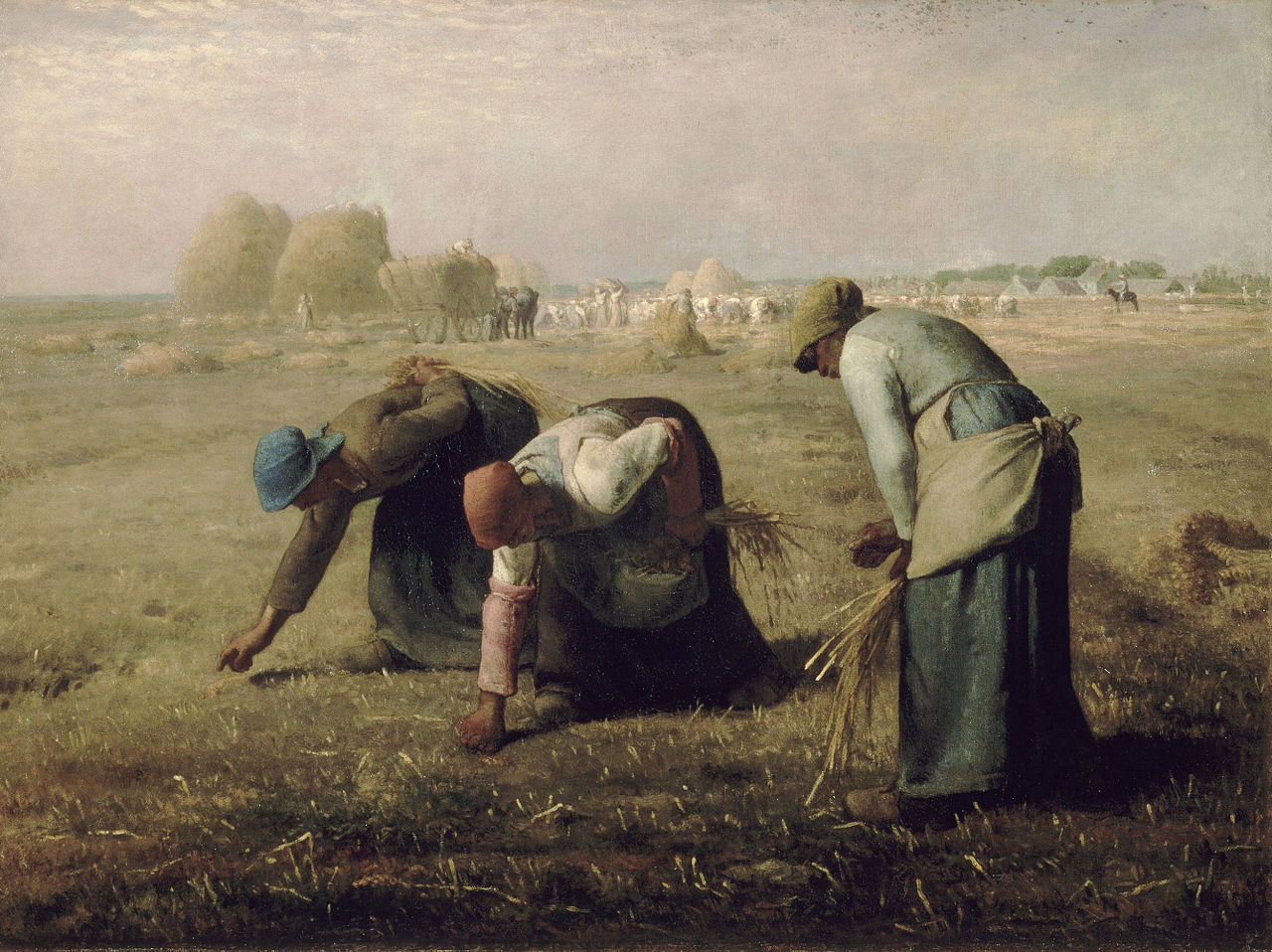Leftover Scraps


The Gleaners (Des glaneuses) (1857)
Jean-François Millet
The Torah exhorts us in this week’s parashah: “When you reap the harvest of your land, you shall not reap all the way to the edges of your field, or gather the gleanings of your harvest…you shall leave them for the poor and the stranger” (Lev. 19:9-10). This mitzvah plays out in beautiful narrative form in the Book of Ruth, read on the upcoming holiday of Shavuot. But Ruth is the exception; she is rescued from her destitute state by Boaz, the owner of the field where she gleans, who marries her. What of all those who remained gleaners—whose survival depended on the daily toil of gathering other people’s leftovers?
Jean-François Millet cast an unexpected light on these disadvantaged members of society in this painting. A work of social critique, The Gleaners depicts three poor women, bent over, gathering meager scraps of wheat, against the backdrop of an abundant harvest. The isolated needy are foregrounded and painted in great detail, in contrast to the impressionistic and distant background of community and plenty—forcing the privileged viewer to notice them. Millet painted The Gleaners on a large canvas (33” x 44”)—a size normally reserved for grand subjects such as religion—exacerbating the discomfort of his upper-class audience. The painting sold for far less than Millet’s asking price. It wasn’t until years after Millet’s death that the artistry and social criticism of The Gleaners was finally truly appreciated.
The Torah pushes the financially secure to be aware of those on the margins—to feel a responsibility to provide a portion for them. Millet takes it a step further, raising the question of whether their allotment is sufficient to lead a life of dignity. Who are our gleaners? Who is making sure that the privileged of our time truly see them? Is our society brave enough to ask itself whether leftover scraps are really enough?



